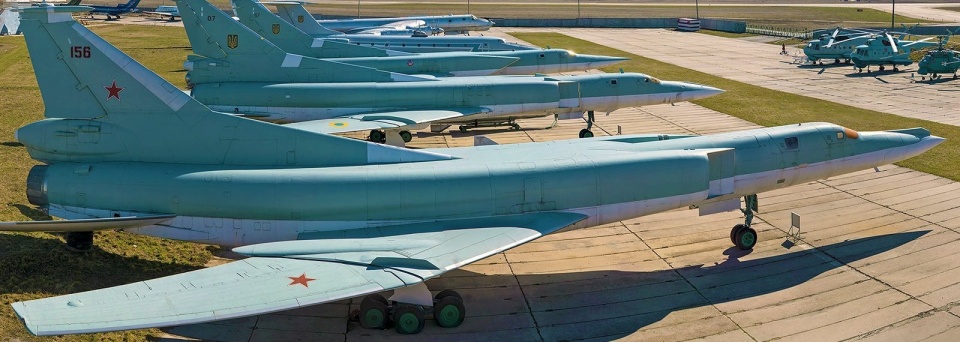The Tu-22M is a tool of aggression

On August 30th, the long-range bomber Tu-22M, developed by the design bureau of Andrei Tupolev, celebrated its 55th anniversary. On that day in 1969, its first prototype took off from the airfield of the Kazan Aviation Plant.
The design of this aircraft began as a deep modernization of the previous Tu-22. However, the designers quickly realized that it was impossible to meet the military’s requirements with just minor changes, and a new machine was needed. A distinctive feature of the new aircraft was its variable-sweep wing. But the authorities were more inclined to support the development of existing equipment rather than agreeing to the creation of an entirely new one. Therefore, for "tactical" reasons, for some time, the program for the new bomber was presented as a modernization of the old one. The previous name was retained, with only the letter "M" (modernized) added. In fact, the Tu-22M inherited from the Tu-22 only the front landing gear.
Tests showed that the Tu-22M0 did not meet the military’s expectations. The Tu-22M1 turned out to be not much better. The next model, the Tu-22M2, was already a fairly reliable machine with a more or less finalized weapons system, and it began to be produced in large series. The Tu-22M3, which went into production until 1993, became even more advanced. A total of 497 units were built. None of them were exported.
There are seven known variants of the aircraft, including reconnaissance versions. The Tu-22M3 bomber was equipped with two NK-25 engines, each with an afterburner thrust of 25,000 kgf. It had a length of 42.46 m, a wingspan at the minimum sweep angle of 34.28 m, a maximum takeoff weight of 124 tons, a combat radius of over 2,400 km, and a top speed of 2,000 km/h. Its armament weight reached 24 tons, including 3,000-kg bombs and X-22 cruise missiles. The munitions could be either conventional or nuclear.
According to NATO classification, the aircraft was given the code name "Backfire." This catchy nickname stuck with the Tu-22M and became its popular unofficial name.
During the Soviet era, "Backfires" were involved in combat operations in Afghanistan. In the post-Soviet period, Russia attempted to use the Tu-22M3 against Georgia in August 2008. However, on its first sortie, one aircraft was shot down, most likely by a Buk air defense missile. However, in Syria, "Backfires" bombed cities with impunity. Russian aggressors actively use this type of bomber in their war against Ukraine. Many war crimes are on the conscience of their crews. For instance, on January 14, 2023, an X-22 missile struck a nine-story building in Dnipro, resulting in 46 deaths, including six children. As a rule, the Russians do not risk approaching the range of Ukrainian air defenses, but still, on April 19, 2024, Ukrainian air defenders shot down one such aircraft. Several others sustained significant damage at their airfields during Ukrainian drone attacks.
Ukraine inherited over eighty Tu-22Ms from the USSR. Almost all of them were dismantled by 2006. Only four museum pieces remain, one of which is located in the Poltava Museum of Long-Range and Strategic Aviation.
The State Aviation Museum houses a unique "Backfire collection" that is unmatched anywhere else in the world. The collection began with the very first of the entire Tu-22M0 family (serial number 5019018). It was used for a long time at the Zhulyany site as a training model for a military engineering school. In October 2002, it was transferred to the State Aviation Museum in a neglected state, but two years later, it was restored by specialists from the Mykolaiv enterprise "NARP." They also significantly helped the museum in bringing two other "Backfires" to exhibition condition.
The Tu-22M2 (serial number 3146253) was produced in 1981. It served as part of the 540th Instructor Research Maritime Missile Regiment in Mykolaiv. In 2004, it was transported disassembled to the State Aviation Museum. The last addition to the collection was the Tu-22M3 (serial number 20106726), produced in 1990. After a brief service in Crimea with the naval aviation, it was transferred to the Ukrainian Air Force and included in the 185th Guards Heavy Bomber Aviation Regiment in Poltava. It represented the national Air Force at air shows in Europe several times. In 2007, the bomber was handed over to the State Aviation Museum. The "Backfire collection" also includes a Tu-134UBL training aircraft.

 Fan-page
Fan-page Youtube
Youtube TikTok
TikTok Aviamuseum
Aviamuseum State Aviation Museum
State Aviation Museum



